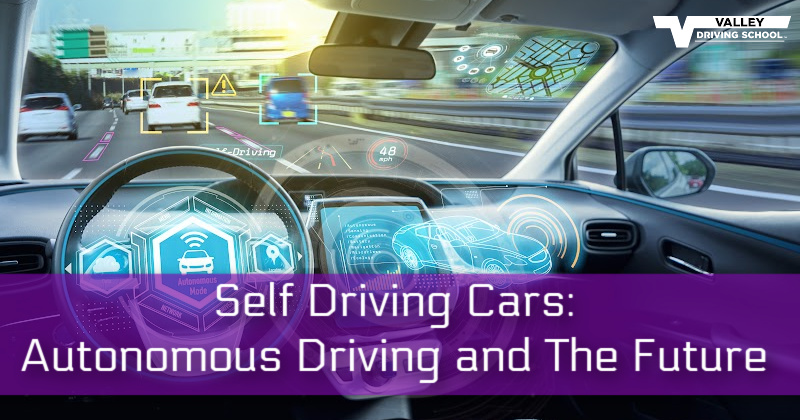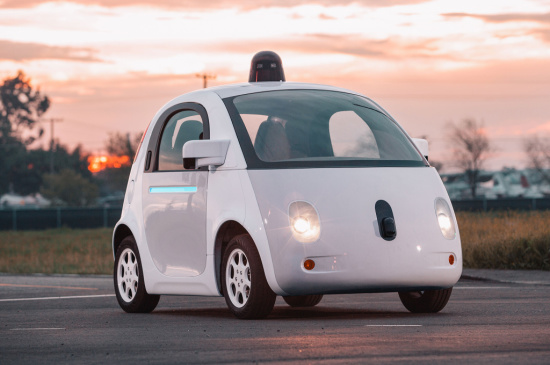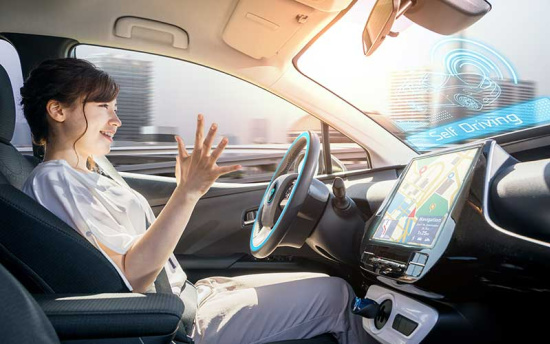When we think of autonomous vehicles, some of us think of the Jetson’s and their beautifully simple and futuristic way of life. Imagine the ease of inputting a few coordinates and sitting back with your fellow passengers to listen to some tunes, maybe take a nap, read a book, or catch up on your favourite series on Netflix - all while the car does the driving for you.

Sounds pretty cool - but like every idea, there’s two - and maybe three in this instance - sides to the coin. The self-driving cars of the future are already here, and autonomous driving is poised to represent the very future of motoring; but what does this mean for the automobile, what does this mean for drivers - and what does this mean for driving schools that teach people how to drive?
In this post, we’ll investigate some of the latest autonomous car news, and some of the debates that have made the subject a hot topic for debate. Are we really ready to let go of driving?
What Does It Mean for Driving Schools?
This is an interesting question - because you’d think the answer may be pretty obvious. Self-driving schools should hinder the number of people looking to learn to drive, so in theory - this is bad for business. But we don’t necessarily see it like that.
What people seem to forget is that while the advent of self-driving cars may make driving tasks like commuting easier, there have long been other ways to get to and from work and in and out of the downtown core of your city for generations.
A 2011 survey by Statistics Canada says that about 12% of Canadians use public transportation to get to work each day. Of those people, 63.5% commute by bus, 24% by subway, and 11.2% by streetcar/light rail/commuter train. Another 5.7% walk to work, and over 200,000 people still ride their bikes. This means that a growing percentage of people are choosing to take public transit to work, meaning fewer cars - if self-driving at all - are making the pilgrimage to the office each day.
Another angle that people tend to forget, is the sporting aspect of driving as a hobby. We’ve spoken about the relationships people can have with their vehicles, giving them nicknames and human personality attributes. We suspect the more robotic reality of not driving the car will inevitably come full circle. Sooner or later, people will miss the sensation of driving, leading us to predict a distrust of self-driving vehicles for some time. A recent study from MIT found that consumers don’t really want self-driving cars - with nearly half of all participants (mostly young people) saying they’d never buy an autonomous car, citing lack of comfort, loss of control and a distrust of technology as major reasons. That loss of control is where we come in.
Driving schools not only teach people how to drive, but how to feel safe and confident driving - a positive note for driving schools, and safety on the road.
What Does It Mean for Cars & Drivers?

For automakers, the notion that 48% of consumers are completely turned off by the idea of purchasing a self-driving car is alarming. Further, lawmakers in different jurisdictions, municipalities, and countries are ultimately in charge of allowing autonomous vehicles on their roadways - and with a growing distrust in technology, that may be difficult to do.
The University of Michigan has found that while drivers are consistently concerned with fully autonomous vehicles, they do want some fully automated features that keep them in active control of the vehicle, with the study reporting that “respondents still overwhelmingly want to be able to manually control completely self-driving vehicles when desired.”
For drivers, this means maintaining the ability to control their own safety. For cars and automakers, this means finding a way to bridge the gap between autonomous vehicles and consumers who demand control over their vehicles. We suspect this could mean fully self-driving cars are still, despite advancements, a ways away from being regular occurrences on roadways.
Clarkson’s Question
As a footnote to issues and concerns of safety, control, and placing trust in technology - we turn to an interesting debate from motorings’ favourite television program, the former iteration of Top Gear.
Jeremy Clarkson points out that driverless cars will have to face complex, ethical decisions while assuming the role as driver. This is an interesting case, because it brings to light the fact that the roads are used by more than just drivers and their cars. Roadways are populated with travelers, commuters, passengers, pedestrians, and cyclists who all stand to be affected by the technology that is used to control and regulate decisions made by autonomous cars. How will a driverless car ever make an ethical decision? Frankly, they can’t.
“You’re driving along, OK? You’re heading towards an accident,” says Clarkson. “Well, you’re not driving, you’re sitting there - and it’s going to be fatal. The only solution is to swerve onto the pavement, but there are two pedestrians there… What does the car do? This is genuine thing. Basically, you will have bought a car that must be programmed, in certain circumstances, to kill you… The interesting thing is, all of us are programmed - because we’re human, because we’re animals, basically - to look after ourselves. Self preservation always kicks in and you will swerve away from danger… These driverless cars are going to face all sorts of things… Driverless cars will be only programmed to do the math.”
Clarkson's point of view is unique in that it questions the ethical use of this new technology, and it’s obligation to preserve life. Will a driverless car have the programming to deliberate what to do in an event like the one he describes? We can’t say confidently, but the notion is - without a human behind the wheel, ethical decisions based on compassion and the preservation of life will go out the window.

The recent advancements and media pizzazz of Elon Musk’s Tesla vehicles have stirred up more questions, excitement, and technology surrounding the present - and future - nature of self-driving cars. The City of Boston has begun a self-driving car pilot program and recently expanded the roadways that may accommodate these vehicles, meaning that practical use isn’t far off and we won’t have to wait for the Jetson’s lifestyle to kick in before we get our chance to try it out for ourselves.
In closing, we’re confident in saying that drivers and manually operated vehicles are here to stay. Citing the importance of safety, control, and the thrill of driving a vehicle make the possibility of choosing an autonomous car over an old school automobile a far-fetched idea. With any luck, we’ll see the self-driving vehicle tech become an option, rather than a defining showcase of future automobiles.
